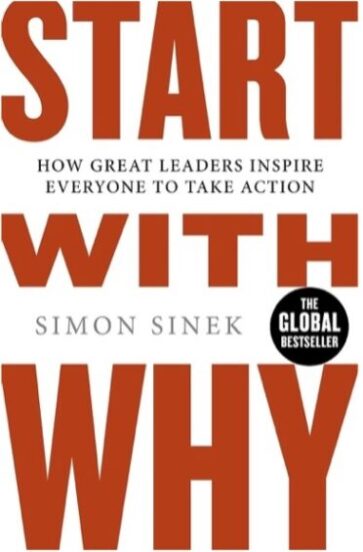Simon Sinek’s TED talks have reached over 100 million people. His first and most famous talk from 2009 was “How great leaders inspire action” (17:48). This introduced the idea of the golden circle to encourage organisations and people to start with their WHY rather than WHAT they do or even HOW they do it, and communicate from the inside out (WHY, HOW, WHAT). A WHY expresses a cause or a core belief.
Start With Why asserts that great leaders inspire action with why; effective salespeople sell with why; master teachers motivate with why. A strong work ethic and highly developed technical skills helps with success, but the capacity to inspire others is mainly about addressing this question of cause and purpose: why? WHAT we do and HOW we go about it is only the tangible expression of a core belief that holds the power of unity and inspiration for a team.
Applied to ADF, WHY has implications across the career lifecycle: recruiters with integrity recruit with why; commanders with heart build morale with why; effective retention starts with why more than other manipulating factors. WHY also has implications across the training continuum. To what extent do our courses unpack the WHY in the big picture of Defence’s overall strategy? In what way could the WHY help learners better understand the importance of having a decisive information advantage in times of peace, crisis or conflict? How would a lesson on new equipment starting with the WHY be different than the scope or details of WHAT the equipment is, or HOW to use it?

Next, Sinek suggests that the benefit in being clear about the WHY is the reciprocal focus the HOW places on values as verbs and processes to achieve the WHY. The HOW becomes the method through which the WHY is expressed. This is where the explanatory sentences of ADF values can be seen as proofs of the WHY. “Respect” is “The humanity of character to value others and treat them with dignity”. Thus, to respect others is to VALUE and TREAT them dignity. Similarly, the value of “Excellence” is to “STRIVE each day to be the best I can be”. Sinek thus reminds us to look at verbs as well as the nouns as processes and practices that will enable the HOW and WHAT to stay consistent over time with our WHY.
Sinek’s golden circle provides a diagrammatic methodology reflective of the structure and process of information of the brain. The WHY represents the limbic brain and the gut-feeling we trust while the neocortex brain corresponds to the logistical WHAT that follows. Notably, Sinek argues that loyalty and trust is associated with the limbic WHY and not the HOW or WHAT.
As we, at Defence Force School of Signals, focus on people, culture and development, a key question for consideration is, WHY do we do what we do? Sinek reminds us that clarity about our WHY helps us to continue to improve ourselves and inspire others, rather than competing with and seeking to be better than others. This is where trust, innovation and inspiration will best emerge from. In the military service, as much as in business, thinking, acting and communicating from the inside WHY to the outside HOW and WHAT will effect authenticity, discipline and consistency. Being consistent with your core belief, the WHY, builds integrity and indeed respect.
For those interested in just reading one chapter, or if you are looking for ideas for a particular topic, you might start with:
- Chapter 2: Carrots and Sticks – for thinking inspiration and loyalty rather than manipulating factors when it comes to retention or selecting new equipment.
- Chapter 5: Clarity, Discipline and Consistency – for helping instructors understand the importance also of HOW we do things, especially with ADF values.
- Chapter 6: The Emergence of Trust – discussing dream teams and why trust matters.
- Chapter 8: Start with WHY, but Know HOW – leading a cause not running organisations.
- Chapter 12: Splits Happen – for inspiration about recruiting, human resource development and succession planning that is consistent with our organisational why.
For further background view the Simon Sinek and Start with Why?’s website or watch “Start With ‘Why’ – TED Talk from Simon Sinek” (7:10). If interested in more of Sinek’s guidance and steps to explore your personal life purpose see his other book Find Your Why. A good practical summary is on SLOWW: https://www.sloww.co/find-your-why-simon-sinek/
His other almost as famous book Leaders East Last will be reviewed in Grounded Curiosity.
About the Reviewers
Darren Cronshaw is a Chaplain at Defence Force School of Signals at Simpson Barracks, Melbourne.
Gysbert Seegers is a Chaplain at Defence Force School of Signals at Borneo Barracks, Cabarlah.

